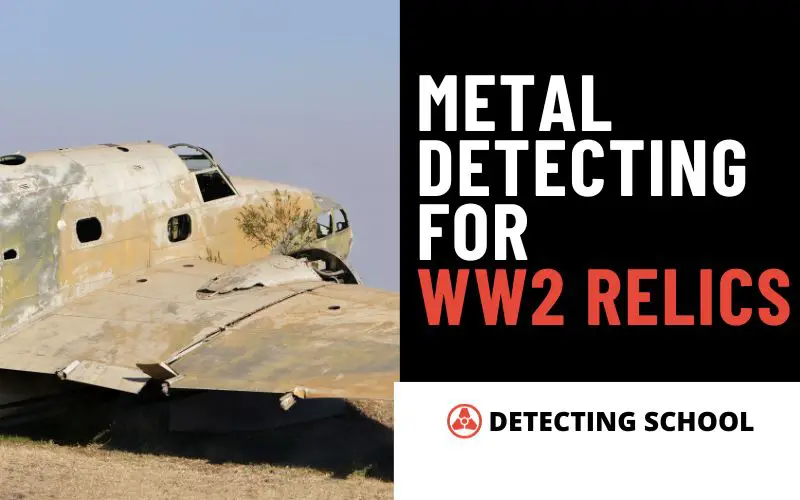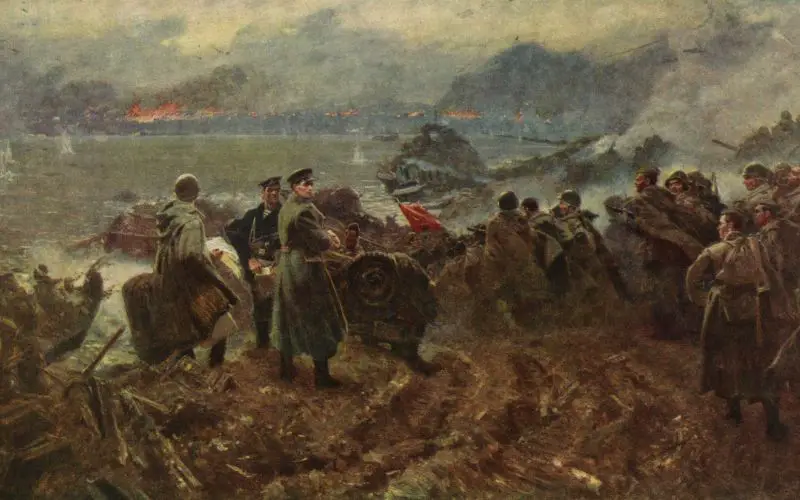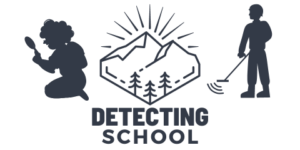
Metal detecting for World War II relics is not as complicated as you might think … In this short read, I am going to dive with you in this topic and explain some highly effective ways to find these types of relics and how you can approach that …
I also address some ways to preserve these wartime artifacts!
Let’s get started …
Key Takeaways
- It is very important to be aware that WW2 relics bridge the gap between tangible history and narrative. That’s why you should conduct respectful and ethical hunting.
- In most cases, WW2 artifacts doesn’t require a fancy detecting machine. A regular one can do the Job!
- Machines with smaller coils are usually more effective while searching for wartime relics.
The history and significance of WW2 relics

World War II relics are tangible remnants from one of the most devastating conflicts in modern history …
Since the war has impacted millions, it has left behind a TON of artifacts ranging from helmets to medals.
These relics, pretty much, bridge the gap between historical narratives and tangible history. They will allow you to personally connect with the past!
Prime locations for WW2 relic hunting
In this section I share some ideas of locations that you may want to target or at least get inspired from (Before targeting any of those locations, please make sure you have the necessary permissions from local authorities):
Common Locations:
- Normandy Beaches, France: These shores have relics from both the Allied and Axis forces. This site had witnessed pivotal D-Day landings.
- Eastern Front Battlefields: Located mainly in Russia, Ukraine, and Belarus. These are vast terrains that have witnessed heavy combat in the past at that time.
- Pacific Island Battlefields: There are several examples for these battlefields like Iwo Jima and Guadalcanal that have artifacts from both Japanese and US forces.
Lesser-Known Locations:
- Ardennes Forest, Belgium: This place is known for the Battle of the Bulge. There have been several smaller skirmishes that occurred there, leaving behind less-sought artifacts.
- North African Desert Sites: Beyond the major battles that took place there has been smaller battles in places like deserts of Libya that were left untouched.
Metal Detector Recommendation for WW2 relics
To be honest, if you already have a metal detector, you should be Ok and ready to Go …
However, if you don’t have one yet, then the machine I personally recommend is The Garrett Ace Apex (Check it Here at Amazon) as it is almost perfect for relic hunting.
The Multi-Flex technology it comes with allows you to fine-tune the search for specific metals that are common in WW2 relics …
It has a reliable ground balance that can actually adapt to various terrains, from European battlefields to Pacific island sites, enhancing detection in mineralized soils.
I also like the Iron Audio feature as it would allow you to distinguish unwanted ferrous targets from valuable relics.
Its low weigh will allow you to keep detecting for several hours without really being tired!
Again, you don’t need an expensive metal detector to get the job done!
Obscure techniques to maximize relic finds …
Having a reliable metal detector is not enough to be successful finding these kinds of relics … You also need to take these techniques into consideration:
- Ground Balancing on Iron: This one is very important if you are dealing with historical iron trash, where non-iron targets masked by iron minerals.
- Coil Height Varying: Keep in mind that some items could sound clearer when the coil isn’t directly on the ground. That’s why I personally recommend hunting while varying coil height!
- Burst Scan: While scanning a specific area, it is better to fast scan it before conducting slow scans. In fact, shorter scans might pick different signals because of sweep speed changes.
- Tone Break Adjustment: If your machine support multi-tones, then I strongly recommend you customize tone breaks. By doing so, you will make sure that when one tone ends, another one starts which can make desired targets more audibly distinct. You can learn how to calibrate your metal detector!
- Use Smaller Coils: WW2 relics are usually found in trashy areas … That’s why smaller coils can offer better target separation, thus more precision.
- Moonlight Detecting: Even experienced detectorists don’t know about that … Indeed, cooler temperatures can significantly improve ground conductivity, enhancing depth range.
Keep in mind that there are some ww2 artifacts that are not magnetic … In this case, you can learn about these techniques to detect non-magnetic items with your detector!
Cleaning and preserving tips for wartime artifacts
Cleaning and preserving wartime artifacts require a sense of delicacy …
Start with gentle brushing to remove loose dirt. For metals, use a soft cloth dampened with white vinegar or lemon juice. You can rinse with distilled water and air dry if you wish.
For textiles you can store them flat in acid-free containers and it is preferably advised to avoid direct sunlight.
I personally recommend handling items with clean hands or white cotton gloves (Check this Example).
If you find something you are suspecting to be highly valuable, then it is better to consult a conservator before any cleaning.
Most important thing is to maintain the artifact’s integrity and historical value! Otherwise, why are we even doing this?!
Ethics of WW2 relic hunting …
I don’t want to talk too much about this part, because I know it might get quite boring …
To make it simpler … just make sure you obtain permissions and adhere to local regulations. Please, treat battlegrounds as hallowed grounds, acknowledging the sacrifices made there.
I won’t recommend or advise making money out of finds … I personally consider this as morally reprehensible.
I highly recommend sharing discoveries with local historians or museums!
You will give a Great example if you prioritize education over personal gain, ensuring wartime narratives are preserved and passed on.
How to deal with hunt sites infested by Military Junk?
One of the best ways to handle that is by utilizing a metal detector with solid discrimination features, to help you differentiate between valuable relics and junk.
Pinpointing using a pinpointer can also help narrowing target locations, minimizing needless digging.
How to Identify and recognize various ww2 relics?
To identifying WW2 relics, you need to have a minimum of historical knowledge. Try to familiarize yourself with reference books (Check this example) and online resources that gives legitimate details about the wartime equipment …
Keep in mind that distinctive markings, manufacturers’ stamps as well as country-specific designs can all help identify those artifacts …
Try to network with other experienced relic hunters and enthusiast groups as this can provide some highly valuable insights.
If you are stuck and not sure, don’t hesitate to seek expert opinions before drawing any sort of conclusions.
FAQ: Did they have metal detectors in WW2?
Yes, metal detectors were used during the WW2 period … Initially these machines were mainly designed for mining purposes, after that their application shifted towards locating enemy landmines.
The Polish engineer Józef Kosacki has brought several improvements upon existing designs, creating what we have called at the time “Polish mine detector” …
This device played a pivotal role during the North African Campaign…
FAQ: How much are ww2 relics worth?
The value of WW2 relics varies widely based on several factors like rarity, condition, and historical significance …
Common items, like buttons or spent shell casings, might be worth about $5-$20 …
More unique items, such as helmets with intact insignias, can be worth anywhere between $100 to $500.
Exceptionally rare finds (like well-preserved officer swords or medals of valor) could be worth much more than usual … prices range from $1,000 up to $10,000 or even more …
Final Thoughts …
I really hope you are now equipped with the necessary knowledge and motivation to start your detection journey for ww2 relics …
Seriously, the info you have in this article will give you a great edge and make your chances to find highly valuable relics very likely!
Lastly, if you are interested in some fun stories, then I recommend checking those metal detecting stories … They are Fun and quite Interesting!
